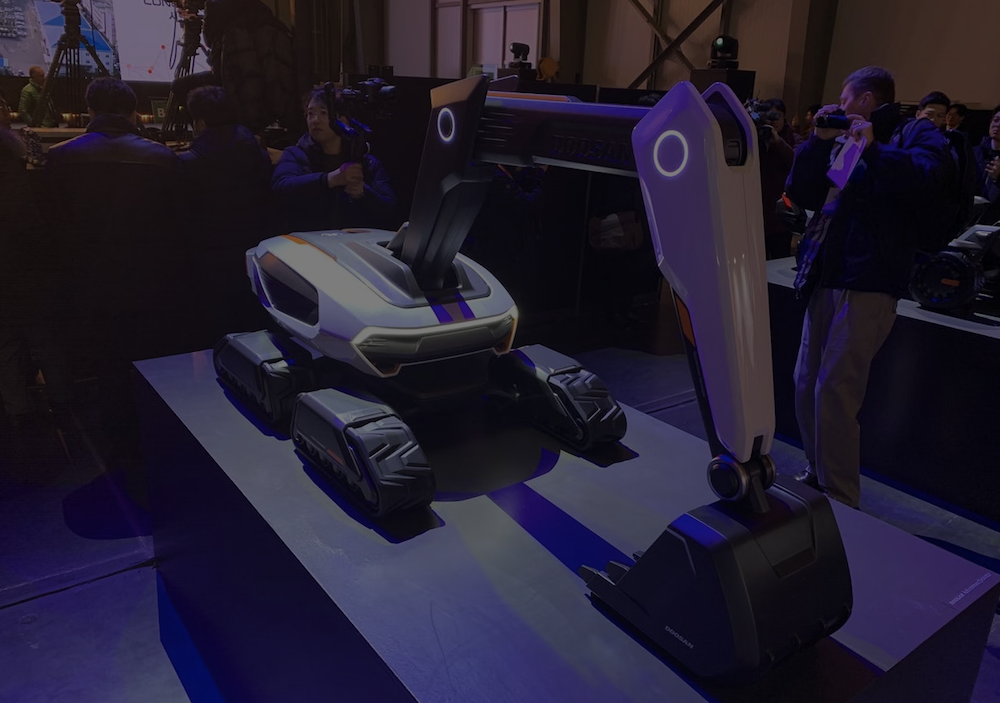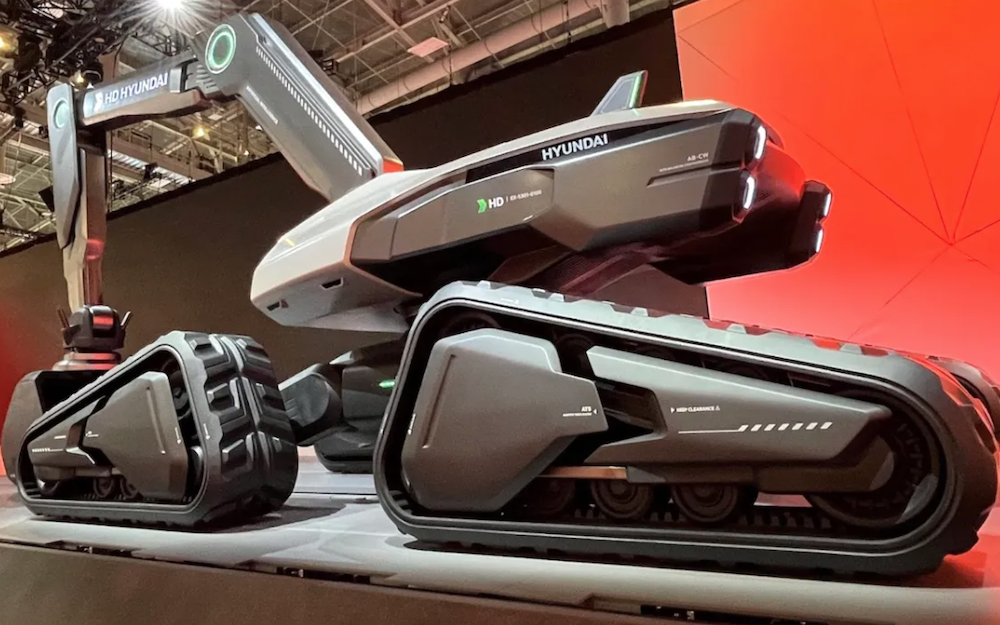The HD division of Hyundai brought some impressive technology to CES 2024, including a full-scale version of its AI-powered Concept X excavator.
This full-scale version of the HD Hyundai Concept X excavator towered nearly 15 feet above the crowds, where it appeared with four articulating ‘tank feet’ powered by electric drive and notably without a drivers’ cab. Hyundai Construction Equipment (HCE) and Hyundai Doosan Infracore first showed off its Concept X excavator in South Korea, back in 2020.

ABOVE: HD Hyundai’s booth at this year’s CES in Las Vegas
The concept excavator boasts fully electric operation – both electric drive and makes use of electric motors and actuators to operate the boom arm, rather than hydraulic oil – and was the first of three such concepts to debut. The other two, an articulated hauler and compact wheel loader are expected to bow in 2025.
The Concept X is all part of HD Hyundai’s core theme of ‘Xite Transformation’, a land innovation vision to solve the problems humanity is facing, such as security, supply chains and climate change. HD Hyundai divided its exhibition area into three themes — Future Xite, Twin Xite and Zero Xite — with life-size construction machines on display.
“Xite Transformation is HD Hyundai’s site vision for future construction sites that aims to solve pressing issues humanity is facing such as safety, security, supply chain issues, climate change, and more,” said Young-cheul Cho, the president and CEO of HD Hyundai XiteSolution and Hyundai Infracore.

One of pressing issues Xite Transformation is hoping to solve – as exemplified by Concept X – is the chronic shortage of skilled equipment operators and commercial drivers on construction sites. Skilled operators have become increasingly rare, and the dearth of such personnel appears to be a permanent shift in culture, not simply a short-term aberration.
While it’s not busy making heavy equipment operators obsolete, HD Hyundai is working to make their lives easier by developing new technology that allows operators to “see through” their machine’s metal bucket.
It works using a suite of sensors, cameras, and monitors to project a digitised image of whatever rocks or blocks or assorted detritus is inside the bucket, and serves to give operators a better idea of what they have in there – which could help them anticipate shifting loads or damaging dangerous electrical or gas lines.

